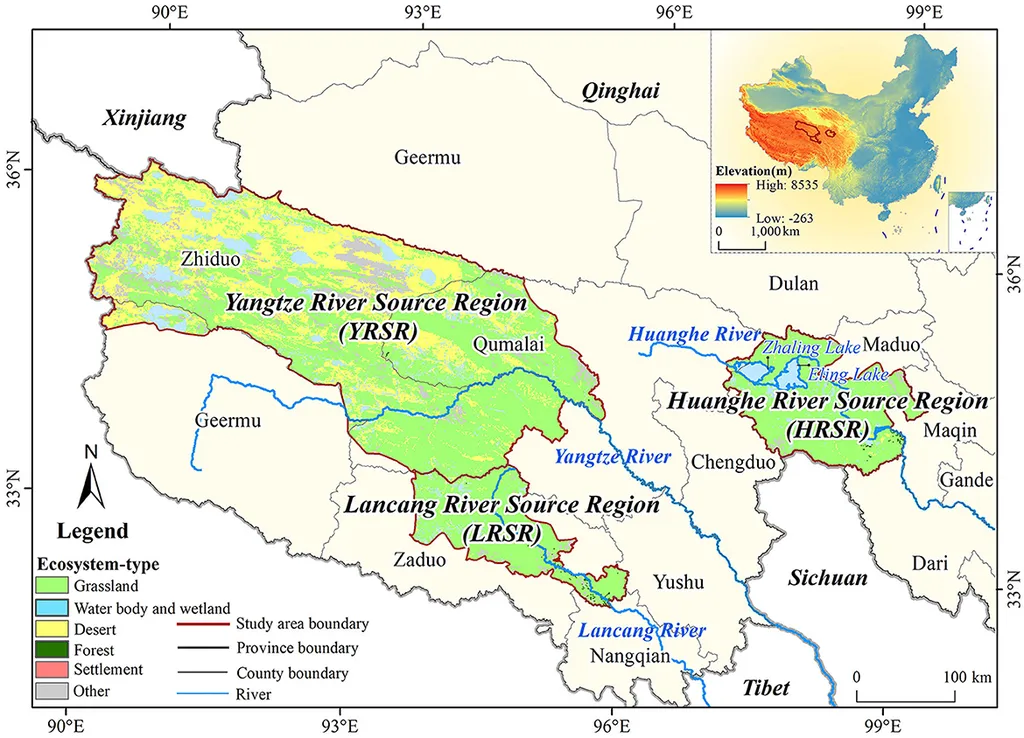In the heart of China’s Qinghai Province lies the Three-River-Source Region, a critical ecological area where the Yellow, Yangtze, and Mekong Rivers originate. This region, often referred to as the “water tower of Asia,” faces a delicate balance between ecological preservation and socio-economic development. A recent study published in *Ziyuan Kexue* (translated as *Resources Science*) sheds light on the dynamic characteristics and influencing factors of green development in this vital area, offering insights that could reshape the energy sector’s approach to sustainable practices.
The research, led by Liu Yexuan from the School of Land Science and Space Planning at Hebei GEO University, along with collaborators from the Hebei International Joint Research Center for Remote Sensing of Agricultural Drought Monitoring, the Institute of Geographic Sciences and Natural Resources Research at the Chinese Academy of Sciences, and the University of Chinese Academy of Sciences, provides a comprehensive evaluation of the green development levels in Yushu and Guoluo Prefectures. These areas are pivotal for understanding the broader implications of green development in the region.
The study employed a multi-faceted approach, integrating the entropy method, comprehensive index method, coupled coordination model, and obstacle degree model to assess the green development levels from 1998 to 2022. The findings reveal a significant improvement in the green development levels of both prefectures over the past 25 years, with notable advancements in ecological protection and environmental governance. “The indicators related to ecological protection and environmental governance showed outstanding performance, with index growth exceeding that of Qinghai Province, particularly during the third period,” noted Liu Yexuan.
However, the research also highlights critical challenges. The resource utilization index continuously declined, indicating relatively low efficiency in the utilization of energy, land, and water resources. This disparity underscores the need for a more balanced approach to resource management. “The relatively low efficiency of resource utilization restricts the further enhancement of ecological and economic coordination,” explained Liu.
The study’s findings have profound implications for the energy sector. As the world increasingly turns to renewable energy sources, the Three-River-Source Region’s ecological integrity is paramount. The research suggests that while significant progress has been made in ecological protection, the inefficient use of resources could hinder sustainable development. This calls for innovative solutions in resource management and ecological industrialization.
Moreover, the study identifies a shift in obstacle factors from environmental governance and ecological protection to resource utilization. This transition indicates that while ecological efforts have been successful, the focus must now shift towards optimizing resource use. “Over the 25-year period, the obstacle factors of green development in both prefectures shifted from environmental governance and ecological protection to resource utilization,” said Liu.
The research also reveals that the coordination between ecological protection and socio-economic development has gradually increased. Since 2005, the coupling degree of green development has shown a continuous high-level coupling trend, with coordinated development entering a relatively coordinated stage after 2016. This positive trend suggests that integrated approaches to green development can yield significant benefits.
For the energy sector, these findings underscore the importance of adopting a holistic approach to green development. By focusing on both ecological protection and efficient resource utilization, energy companies can contribute to sustainable development while meeting the growing demand for renewable energy. The study’s insights could guide policymakers and industry leaders in crafting strategies that balance ecological integrity with economic growth.
As the world grapples with the challenges of climate change and resource depletion, the Three-River-Source Region serves as a critical case study. The research published in *Ziyuan Kexue* offers valuable lessons for other regions facing similar challenges. By learning from the successes and setbacks in Yushu and Guoluo Prefectures, the energy sector can develop more effective strategies for achieving sustainable green development.
In conclusion, the study led by Liu Yexuan and his team provides a nuanced understanding of the green development dynamics in the Three-River-Source Region. It highlights the need for a balanced approach that prioritizes both ecological protection and efficient resource utilization. As the energy sector continues to evolve, these insights will be instrumental in shaping policies and practices that promote sustainable development. The research not only advances our understanding of green development but also offers a roadmap for achieving a harmonious balance between ecological and economic goals.

